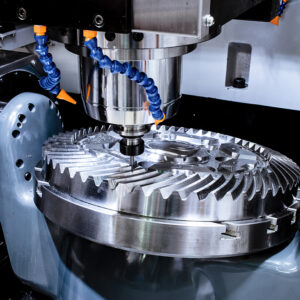What is Vacuum Casting?
Vacuum casting is a manufacturing process that involves creating silicone molds from a master model and then using these molds to produce parts in a variety of materials, typically polyurethane resins. The process is conducted under vacuum conditions to ensure that the liquid material fills every detail of the mold, resulting in high-fidelity replicas of the original model.
How Vacuum Casting Works
Master Model Creation:
The process begins with the creation of a master model, which can be made using 3D printing or CNC machining. This model serves as the basis for the silicone mold.
Mold Making:
The master model is encased in liquid silicone, which is then cured to form a mold. Once the silicone has set, the mold is cut open and the master model is removed, leaving a cavity in the shape of the original part.
Casting:
The silicone mold is placed in a vacuum chamber, and the chosen casting material (usually a type of polyurethane resin) is poured into the mold. The vacuum removes air bubbles, ensuring the material fills every detail of the mold.
Curing:
The filled mold is then cured, often in an oven, to solidify the material. Once cured, the part is removed from the mold, and any necessary post-processing, such as trimming or painting, is performed.
Applications of Vacuum Casting
Vacuum casting is used in various industries for:
Prototyping: Ideal for creating high-quality prototypes with properties similar to final production parts.
Short-Run Production: Suitable for producing small batches of parts, typically ranging from 10 to 100 units.
Design Validation: Helps in testing the form, fit, and function of a design before committing to mass production.
Benefits of Vacuum Casting
High Detail and Surface Finish: Captures intricate details and provides a smooth finish, closely resembling injection-molded parts.
Material Versatility: Supports a wide range of materials, including rigid, flexible, and transparent resins.
Cost-Effective: Lower setup costs compared to other manufacturing methods like injection molding, making it ideal for small runs.
Quick Turnaround: Faster than traditional tooling methods, allowing for rapid iteration and development.
Challenges and Considerations
While vacuum casting offers many advantages, it has limitations in terms of scalability for large production runs. The durability of silicone molds is also limited, typically allowing for 20 to 25 castings per mold. Additionally, the process may not be suitable for very large parts due to mold size constraints.



